Basenji: description of the breed, rules of maintenance and upbringing

Basenji is a special dog. A graceful, graceful animal can become a cheerful companion and devoted friend. The uniqueness of the breed lies in the inability to bark, which, combined with a spectacular appearance and friendly character, makes pets desirable for dog breeders.
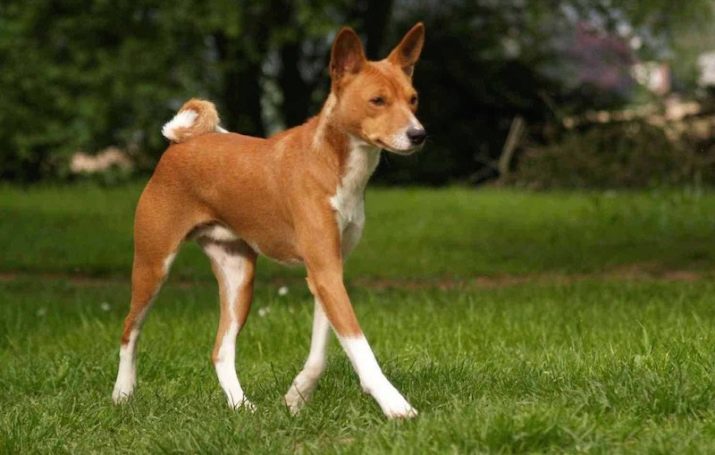
The breed can be called rare, Basenji puppies are quite expensive. Therefore, before making a choice in favor of such a pet, it is worth considering all the pros and cons. You will learn about the character traits and nuances of keeping an unusual dog from the article.
Origin story
The breed is very ancient. Surprisingly, for thousands of years it has not changed at all. According to the excavations, such dogs lived in ancient Egypt. This is evidenced by the found drawings and figurines depicting these animals. It is also known that mummies very similar to modern pets of dogs were found in the tomb of Tutankhamun.
but the birthplace of a unique dog is still considered to be Africa... It was from here that the animals were transported to Egypt. The natives used animals for hunting. It is believed that the silence of the Basenji is closely related to its past use.
The Egyptians treated dogs with respect. They believed that animals are able to protect humans from evil forces.
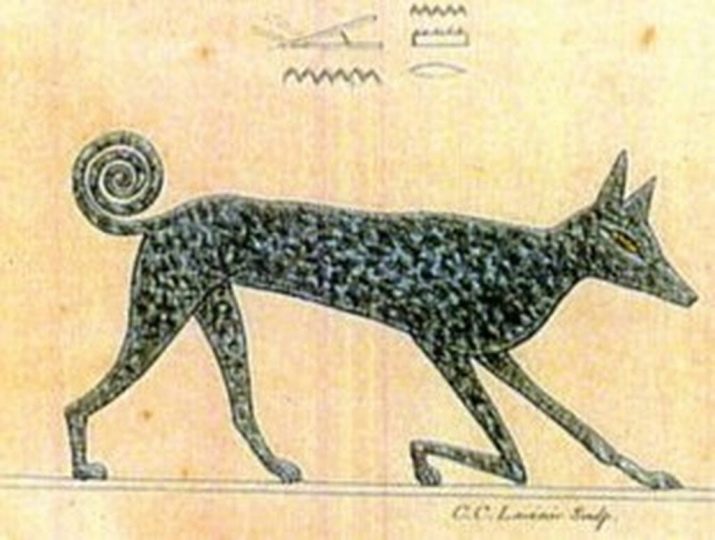
After the decline of the ancient Egyptian civilization, silent pets remained in demand.
They were appreciated for their intelligence, courage, dedication and valuable hunting qualities.
The rest of the world learned about the wonder dogs in the 90s of the 19th century. First they were brought to England, then to America. The popularity of the breed increased rapidly.In the 40s of the XX century, animals already actively participated in prestigious exhibitions, starred in films. They were taken as pets by people holding a high position in society. Among them were royals (Princess of Monaco and others).
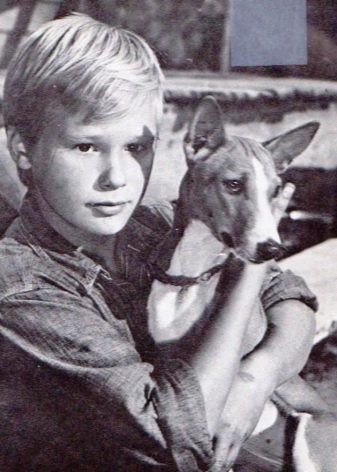

The breed came to Russia in 1997. All the animals brought were of a high class. Their today's descendants are not inferior in characteristics to individuals from prestigious foreign nurseries. However, despite this, the number of representatives of the breed in our country is still small.
The main value of silent dogs is that they were created by nature itself.
Elegant appearance, quick-wittedness, peculiar character - all this is the result of natural selection. Even devotion to man originated in Basenji without the intervention of breeders. Therefore, the owners are especially interested in watching the pet, to find a common language with him.
The names of the breed in everyday life are different. Congo Terrier, bush, African, Egyptian dog - these are not all options. To many, the ancient breed still seems mysterious.
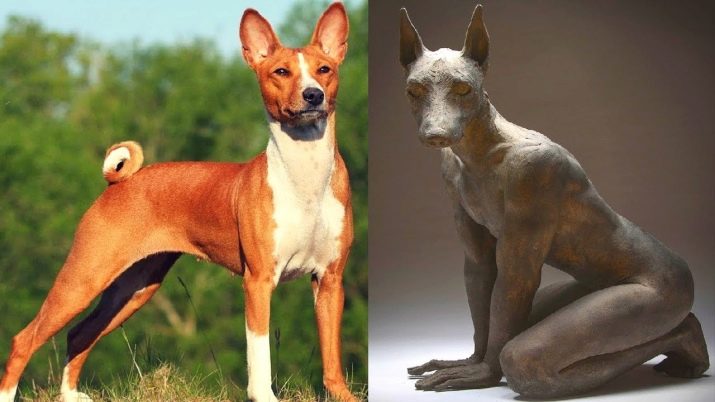
Nevertheless, the popularity of unusual pets is gradually growing, more and more dog breeders get to know them and remain captivated by their charm.
Description of the breed
Basenji are small graceful dogs. However, for all their gracefulness, they have an athletic build and strong legs.
Among the distinctive external signs are funny wrinkles on the forehead, which appear when interested or excited, and a tail curled in a donut.
The growth of boys at the withers reaches 43 cm. Girls grow up to 40 cm. The weight of an adult animal varies from 9.5 to 11 kg. Let's consider other characteristics of the breed according to the standard.
- Head. The skull is slightly flat and of medium size. The muzzle is elongated and tapers towards the nose. Wrinkles can be seen on the forehead (they are especially pronounced in puppyhood). The ears are small, V-shaped, erect. On the head, they are quite high, slightly tilted forward. The nose is black. The eyes are beautiful, dark brown, almond-shaped. The look is smart, expressive.
- Frame. The body is harmonious, well balanced. The neck is of medium length, provides good visibility and a regal posture. The back is straight. The belly is tucked up. The tail is small, set high, curls into a ring and lies on the back.
- Extremities. Legs are long, muscular, straight, provide quickness and ease of movement, excellent coordination. The paws are equipped with thick pads and short claws.

Animal hair is very short, soft and shiny. It fits snugly to the body. These dogs have no undercoat, so they freeze in the climate of the middle lane.
Already at a temperature of +5 degrees Celsius, the pet needs to be insulated with clothes.
As for the color, there are several acceptable options. The most common are black, brown or red with white spots. Paws, chest, neck, tail end are usually snow-white in these cases. And also there is a tricolor. Tricolors can be black, red (brown) and white. Rare, but very beautiful are brindle-colored dogs. In this case, the red tint is complemented by black stripes.
It is worth noting that experts distinguish 2 subspecies of Basenji, differing in size. The flat variety is represented by larger individuals with light-colored wool. Forest - short dogs (below 40 cm) of darker shades.
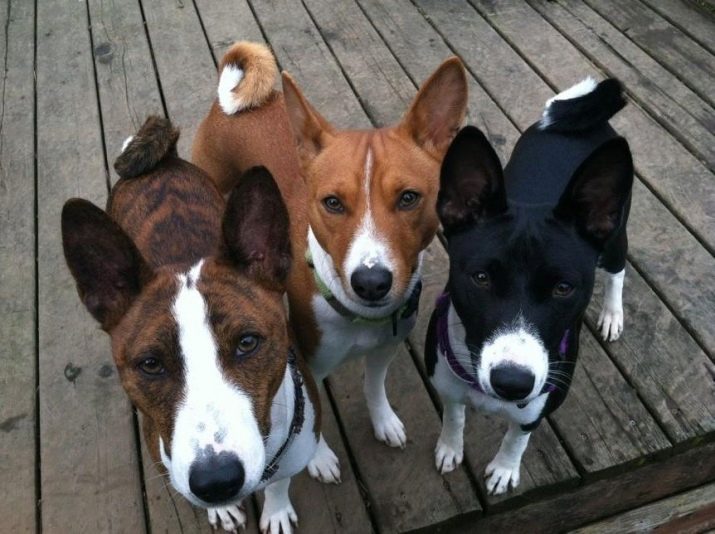
Why is it called "the silent man"?
As already mentioned, these unique dogs do not know how to bark at all. However, their vocal cords work. Animals sometimes growl and make various interesting sounds, reminiscent of singing, sighing or snorting.
A beautiful legend is associated with the dogs that do not bark. According to her, in ancient times, a pack of wild dogs accidentally heard the secret of one of the tribes of the natives.
To preserve her, the animals vowed to be silent forever.

Character traits
Basenji are very active and temperamental. They are hunters by nature. Despite the fact that today representatives of this breed are kept as companions, it is impossible to ignore the need for animals to realize a huge amount of energy.
For the health of a pet, it is important to walk it regularly and for a long time, to engage in interesting activities and games.
Silent pets are good-natured. They are affectionate, loyal. Dogs may be indifferent to strangers, but they love their owners.
The breed is suitable for families with children.
They will treat all people in the house with tenderness. However, it should be borne in mind that the pet has a character, therefore, he will not want to perform the function of a living toy. But he can well become a faithful friend.
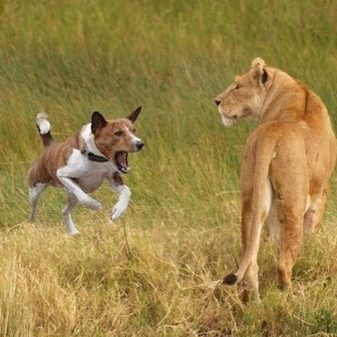
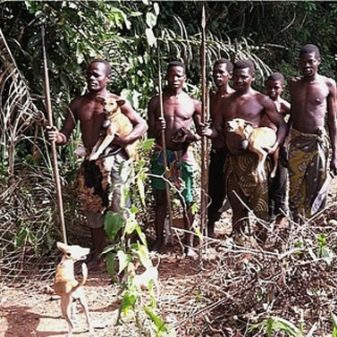
With other dogs, non-biting individuals also easily find a common language. Under natural conditions, such animals live in flocks, so they are very social. But the pet will consider smaller animals (cats, hamsters, ferrets and so on) as "prey". It is extremely difficult to change this situation. Basenji are smart, have a good memory.
They are easy to train, but they are very willful at the same time.
Living in the wild, dogs have become very independent. Despite love and respect for the owner, sometimes they may not obey if they do not like something. In addition, if you leave the dog unattended for a long time, he can start naughty, entertaining himself.
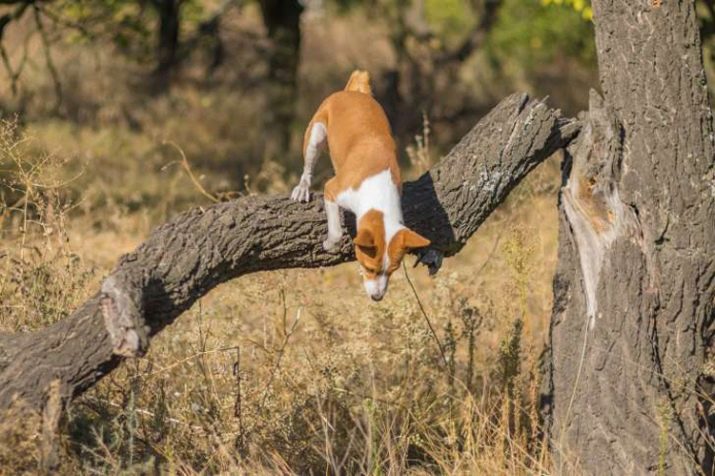
Curiosity and restlessness can put a pet in an unpleasant situation. He can escape by letting him off the leash while walking. For example, he may be carried away by an interesting smell, a passing car or a cat running by. In the latter case, the "hunter" will begin pursuit, ignoring the call of the owner and any other circumstances.
Therefore, it is important to keep a close eye on your four-legged friend, especially if you are walking in an unfamiliar place.
Experts say that every dog without barking can also have personality traits. But with each of them, you can establish a strong emotional connection.
The main thing is to treat your pet with love and respect, show patience and understanding.

Advantages and disadvantages
The inability of the Basenji to bark is a definite plus for dog breeders living in multi-storey buildings. But on the other hand, this quality does not allow the dog to become a real guard. Of course, animals have great instincts. When strangers appear, they stand up and make a displeased rumbling. But it will not be able to scare anyone away.
Willfulness is another drawback of silent pets.
Without firm control, animals are bullies.
And also this trait sometimes manifests itself in disobedience and refusal to obey commands. Because of this, some breeders refer to Basenji as "cat-dogs."

The difficulty of walking is another problem.
- Without clothes, the dog can only be taken outside during the warm season.
- There is a need for constant monitoring. Keep your pet on a leash near the road and in busy areas. In this case, walks should be long and active (at least 1-1.5 hours twice a day).
Such dogs need daily physical and mental stress. They need running, fun games.
If you do not allow four-legged pets to throw out all their energy during a walk, they will begin to cause inconvenience to the owners at home.
Another important point is the bad natural habit of dogs to pick up something on the street and eat it. If you do not monitor the behavior of the animal, it can harm its health.
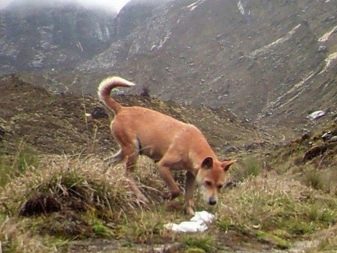
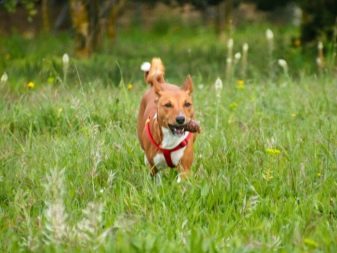
At home, the dog breeder also faces upbringing difficulties. Intelligence does not prevent dogs from trying to take a seat more comfortable and higher. If you are against the dog lying on the couch, and even more so on the bed, you will have to be patient to instill certain rules of behavior in your four-legged friend.
Basenji don't like water.
Accordingly, getting a dog to take water treatments is very difficult. However, the animals are very clean.They support hygiene by washing their faces like cats. In addition, African dogs do not smell, which can also be added to the list of their merits.
So, this breed is very peculiar, it will not suit everyone.
However, if you are an experienced dog breeder, an active person with a positive outlook on life and a strong character, such a pet can become a real friend and companion for you, capable of raising your spirits at any time.


Life span
On average, representatives of this breed live up to 12-15 years.
Animals rarely get sick, but troubles can still happen.
Therefore, the owner of the dog should carefully monitor his health and, if necessary, take measures and consult a doctor.

Consider a list of ailments that most commonly affect these dogs.
- Kidney pathology. Early signs: intense thirst, frequent urination. If started, the disease can lead to massive weight loss, muscle wasting and complete dehydration. As a result, the animal is at risk of death. Treatment should be started as early as possible. The disease is of a genetic nature. It usually appears when the dog reaches 5-7 years of age.
- Hypothyroidism Signs of the disease: excess weight, a decrease in body temperature, deterioration of the condition of the coat and skin, swelling.
- Hereditary vision problems (usually seen in adults).
- Indigestion, poisoning. To minimize such incidents, it is important to provide the dog with high-quality balanced nutrition, make sure that he does not pick up anything on the street. It is advisable to purchase potassium permanganate, a solution of magnesia oxide, apomorphine, Glauber's salt for a home first-aid kit. Of course, it is necessary to figure out in advance in what cases and how these medicines should be used.
It is also important to get your pet vaccinated according to the established schedule. It is periodically recommended to carry out anthelmintic treatment.
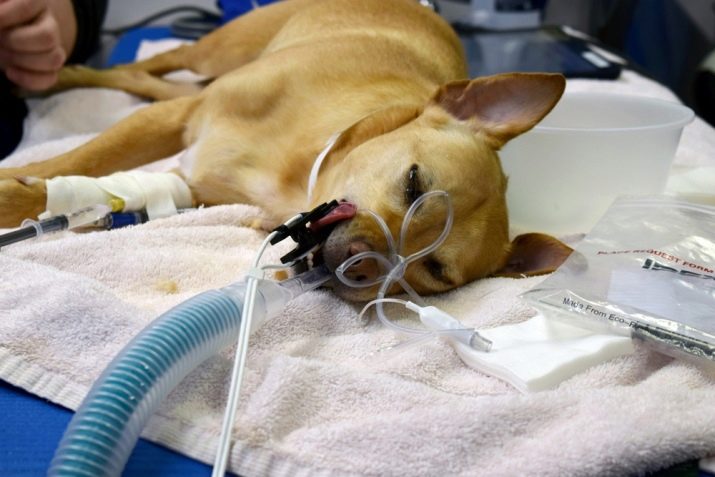
How to choose a puppy?
It is better to buy a puppy of this rare and expensive breed in a kennel.
Attempts to save money and purchase an animal from your hands can turn out to be disastrous for you.
At best, the dog may not be a purebred. In the worst case, you may be sold a sick puppy. In kennels, however, they give a guarantee that you will get a healthy purebred dog.
Puppies are ready to move to a new home after they reach 1.5 months of age. However, it is better to choose from 2 month old babies.

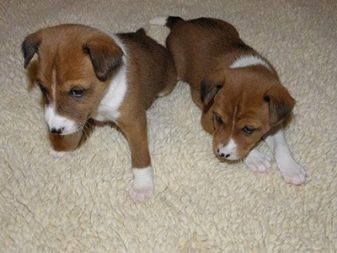
If you are offered to buy puppies at the age of 1 month, this should alert you.
Professional breeders don't do this.
When choosing a puppy, you should pay attention to its appearance. The bite must be correct. There should be no discharge in the ears and eyes. The mouth should be pink in color. The nose should be black, the eyes should be clear, with a healthy glow in the eyes.
Give preference to an active baby, not too thin or overweight.
If the puppy is lethargic or clumsy, this indicates deviations in health. Observe the behavior of the little ones. Pay attention to their relationship with each other. Try to identify the friendliest puppy.

Such a dog will become an affectionate and loyal friend in the future. If possible, look at the parents of the puppies. They must be well-groomed, well-mannered. If dogs are aggressive and inadequate, it is possible that the same traits may appear in the future in their children.
Be aware that you must be provided with all important documents.
This is a veterinary passport, a puppy card. The passport must contain information about the examination of the pet for dysplasia.
Don't be afraid to ask additional questions. It is important how the childbirth went and how the puppy you chose was born.
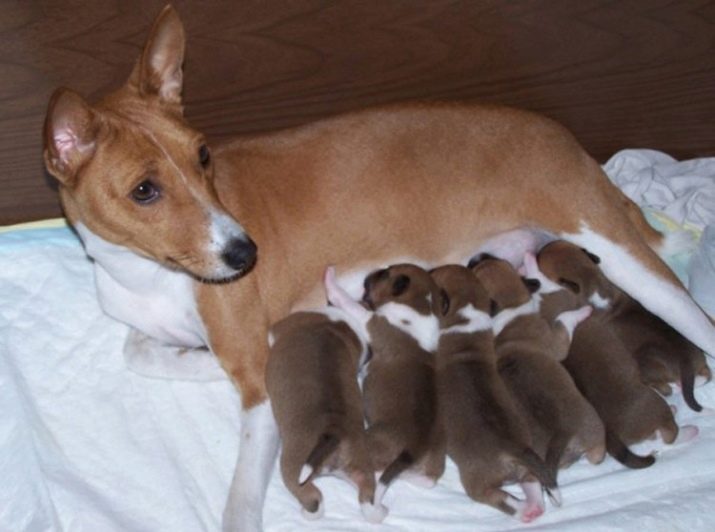
Ask how his body reacted to the first vaccinations, whether anthelminthic treatment was carried out. Professional breeders provide all the information and advice on further dog care.
If you are an experienced dog breeder, you can get a teenage puppy. However, it should be understood that in this case you will have to make much more effort to educate your pet and establish contact with him. Better to take a calm and docile dog. In adults, it is already possible to determine the temperament and the prevailing character.
Basenji prices are quite high. Moreover, they vary depending on the class, the exterior of the puppy, the achievements of the parents, the prestige of the kennel.
- Pet-class individuals are the most inexpensive. Such a puppy can cost about 15,000 rubles and more. He will grow up healthy, but some deviations will not allow him to take part in exhibitions. And also you cannot use such a dog for breeding. But if you just need a four-legged friend, this option may well be considered.
- Breed class is more expensive. Such animals are estimated at 25,000 rubles. They are also not suitable for exhibitions, but the shortcomings of the exterior of these individuals are invisible at first glance. Only a professional will be able to determine what exactly the pet does not meet the standard. For the production of pedigree offspring, animals of this category are quite suitable.
- Show class is the most expensive. The minimum cost of such a puppy is 30,000 rubles. These are pets with an impeccable pedigree. Growing up, they become champions of prestigious exhibitions. Their offspring will also be very expensive.
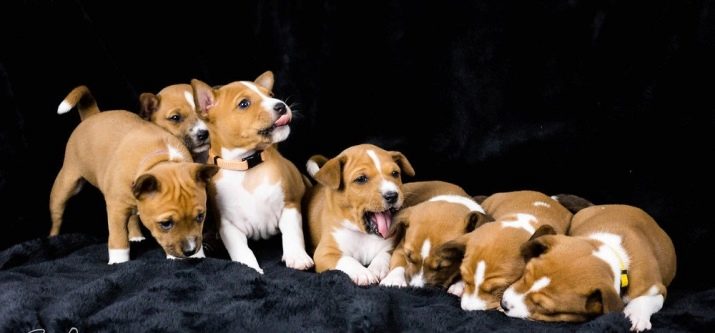
Maintenance and care
Basenji can be kept both in a city apartment and in a country house. Caring for the animal is simple.
Short coat does not need clipping and constant brushing
Only in puppyhood the pet's coat should be periodically combed out to remove dead hairs.
Basenji wash their faces almost like cats. Therefore, they always look neat and well-groomed. You don't have to worry about the cleanliness of carpets and upholstered furniture.
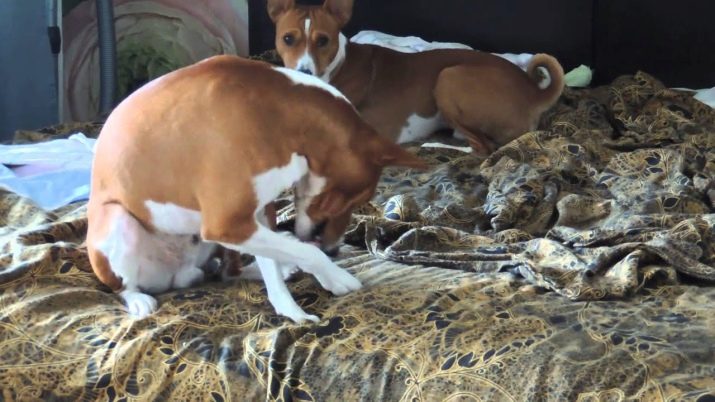
As already mentioned, These dogs are afraid of water, so they should be bathed only when necessary. Perhaps this attitude to water procedures is closely related to the genetic memory of animals. Everyone knows the danger of swimming in the waters of Africa, where crocodiles are found, and it was there that the breed was formed. African origin also determines the thermophilicity of dogs.
They don't like the cold. Therefore, the sleeping place should be located away from drafts.
As for walking, you can't do without a small dog's wardrobe.
Regular eye and ear examinations are mandatory hygiene procedures. To eliminate secretions and dirt, use cotton swabs (for the eyes) and cotton swabs (for the ears).
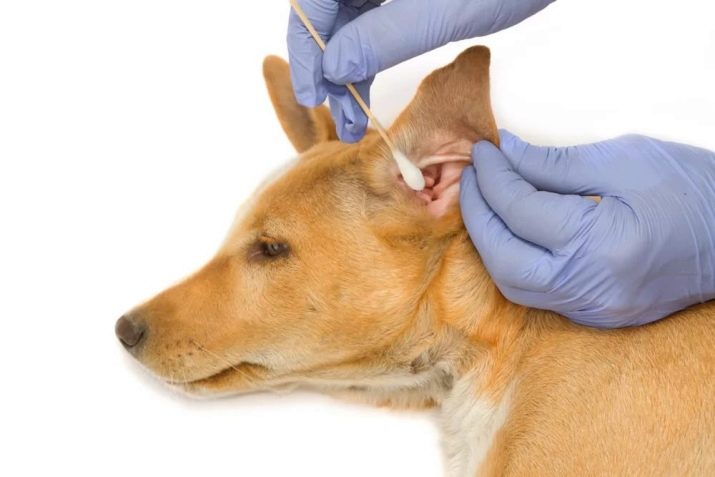
The claws of the representatives of this breed are not long, but from time to time they should be cut off or sharpened with a special file. The procedure is carried out 1-2 times a month.
It has already been said about the regular intake of anthelmintic drugs. And you should also check the pet's coat for ticks and other pests in the warm season. A good solution would be to use a special collar that protects against ticks and fleas.
And, of course, active walks and outdoor games are a prerequisite for the harmonious development and maintaining good physical shape of the pet.
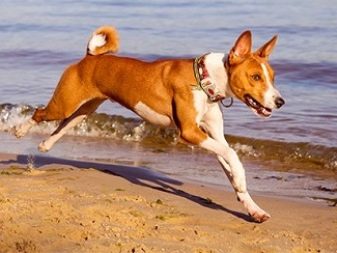
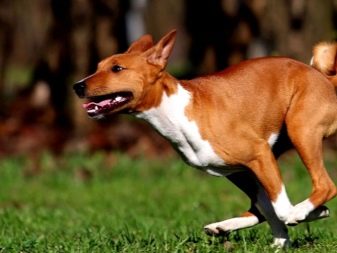
Feeding
The Basenji diet should be given special attention.
Lean meat (for example, veal) should become its main component.
His dog is given raw. Bones can be given to your pet once a week, not more often. In small quantities, offal and fish should be included in the menu. Boiled cereals (rice, oatmeal, buckwheat) without salt are useful. You can also give the dog kefir and quail eggs. When it comes to vegetables, grated carrots are the best addition to your diet.
It is allowed to feed the animals with dry professional feed.


Of course, these should only be super premium products. The pet should always have access to clean drinking water. Therefore, fill the bowl with it in a timely manner so that the animal can drink at any time.
Watch your dog's weight.
You cannot overfeed him, since representatives of this breed are prone to obesity.
In addition, it is forbidden to feed the animal with sweets, smoked, spicy food.


Education and training
First of all, you need to teach the animal to behave with dignity at home. Basenji easily climb to any height. Therefore, immediately make it clear to the puppy that you cannot climb onto the bed if you are against it. Also, do not feed your pet food from your table. Whatever cute expression on the face of a dog trying to beg you for a bite of something tasty, do not give in.
Train him to eat in a specific place from your bowl.
Otherwise, the pet will shamelessly drag food off the table.
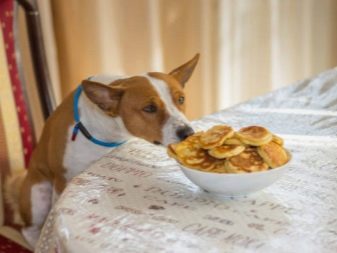

Do not disregard the dog. Domestic hooliganism, which these cute creatures are often accused of, usually occurs precisely because the animal is bored.
Training African dogs is not easy. They are reluctant to execute commands. But the point is not stupidity. The breed is considered to be quite smart. It's just that such animals are very self-sufficient. They believe that they know best when to get up, when to sit down, where to walk and, in general, how to behave. However, some success can still be achieved.
Shouting and punishing won't help. Patience and cunning should be shown here.
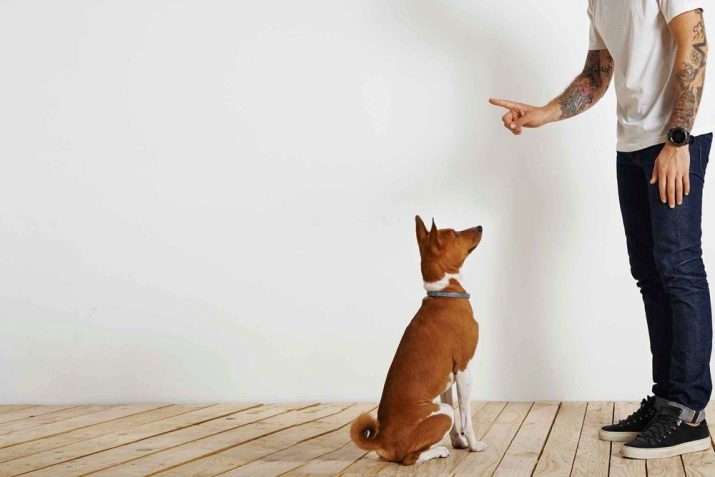
For example, when learning the command "Come to me!" a roulette leash will help you. Don't unhook the animal from the leash, just loosen the tape measure. Wait for the pet to walk a long distance and secure the length of the leash. The dog will feel discomfort and stop moving. Upon hearing the command, he will turn and walk towards you.
This will help you master the call by limiting the dog's freedom of choice without physical pressure. At the same time, you will show your pet which one of you is in charge. At the same time, do not forget to encourage your four-legged friend with affectionate words and treats. This will make it clear to him that for the correctly performed actions he will receive some benefit for himself.
To reduce your dog's urge to run away for a walk, let him know that he might be interested in being around you, too.
Entertain her with games, don't get bored.
Besides fair rewards, regular exercise is important. The practice of skills must be carried out constantly, changing conditions and circumstances.
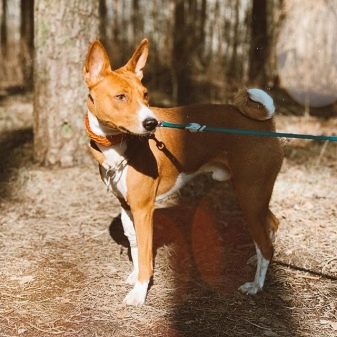

If the dog still ran away, but then returned, in no case do not scold him. Moreover, physical punishment is unacceptable. The pet will not understand that you are unhappy with his escape. He may think that you are screaming because he came back. In this case, the next time the dog may simply not return.
If the dog is in your path, do not go around it or step over. The African must understand that you are in charge here and make way for you.
This is how authority is formed. Experienced breeders provide another valuable tip. In order for the Basenji to allow you to take away from him what he constantly tries to eat on the street, you need to accustom him to this from childhood. From an early age, periodically open the puppy's mouth and take food from him. Firmly suppress the indignation. This will make your life easier when the dog grows up.
It is better to walk a silent dog on a special spacious area away from roads and busy places. Here, the restless creature will be able to frolic in plenty until it splashes out excess energy.
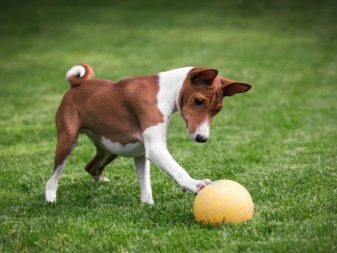
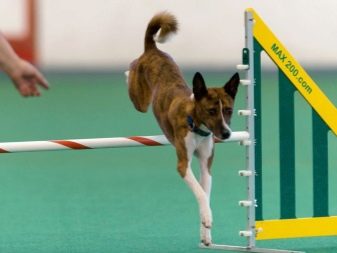
Clothes and accessories
After purchasing an unusual dog, you should immediately go to the store for the necessary accessories for walking. First of all, this is a collar and leash.
Experts recommend choosing a leather collar called herring.
It expands in the throat and narrows on the back. This reduces pressure on the neck and minimizes the risk of injury. In such a collar, the pet will not suffocate, even if it pulls the leash tightly.
As for the leash, it is better to give preference to the tape measure.
The optimal length of the product is at least 3 meters. This will give the pet freedom of movement. It is worth noting that belt models are more durable than rope models.

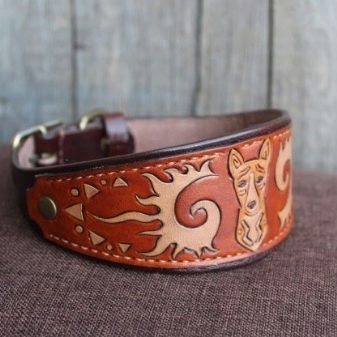
You can replace the collar with a harness. The design allows you to transfer pressure to the body of the animal. Adjustable thick fabrics are preferred. Remember that the ammunition should not hinder the movement of the dog and cause him inconvenience.
If you have no desire to take garbage from the animal every time, you can get out of the situation in a different way.
Buy a muzzle for your pet.
For example, a plastic model would be a good choice. Some people prefer metal options with leather lining. In any case, the product should be larger than the dog's face. Thanks to this, the African will not experience discomfort and will be able to slightly open his mouth if desired.
Narrow fabric muzzles hold the animal's mouth tightly. They are usually used for travel on public transport. This option is not suitable for walking, since the dog should not be in such a muzzle for more than 30 minutes.
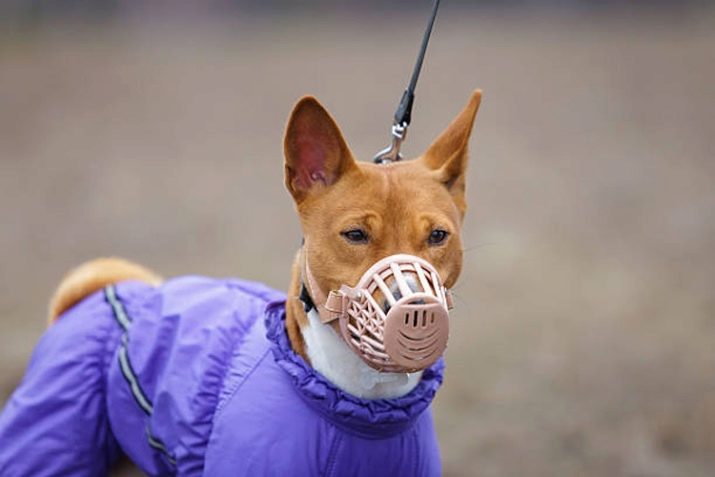
For protection from wind and low temperatures in the off-season, the owner of the Basenji can purchase a blanket. It is a back cover with a soft inner side that keeps your pet warm. On rainy days, it is advisable to wear a raincoat (clothing made of fabric that does not allow moisture to pass through). It can be made both in the form of a blanket and in the form of a jumpsuit.
Warm jumpsuit is essential for winter walks.
It covers the entire body of the dog, including the belly, legs, neck. Typically, these garments have two layers. The outer one is made of a membrane fabric that does not allow moisture to pass through. The inner layer is most often a warm and soft fleece.
To prevent the dog from frostbite on his paws, he needs special shoes.
It also protects the pads from reagents that are often sprinkled on the streets in winter. The inner side of the shoes is trimmed with fur or fleece. External - made of wear-resistant material.
If the winters in your area are harsh, you can additionally insulate the dog with a hat. Some models are complemented by a bib or snood (such a product covers not only the head, but also the dog's neck). The latter option will be useful if the warm jumpsuit does not have a collar.

Owner reviews
Based on the reviews of the owners, Basenji is a difficult breed. Wayward, overly independent dogs give their owners a lot of trouble in training and education.
It can be especially difficult for novice dog breeders.
However, there are practically no negative reviews.
The fact is that the positive qualities of a pet overlap both its restlessness and petty hooliganism... A charming little face with unique facial expressions leaves no one indifferent. Dogs are affectionate, loyal, playful. It is interesting to watch them, it is pleasant to be with them. For those owners who love their African miracle with all its flaws, the dog reciprocates.
You can see about Basenji dogs in the video below.






































